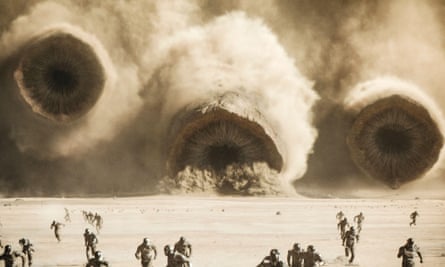Cinema is a hell of a drug. For movie lovers, a trip to the pictures is just that, a two (or, increasingly, six) hour psychoactive escape from the drab outside world. The rushing highs, the crushing lows, the kaleidoscopic lights, the bombastic sounds; and that’s just the Pearl & Dean indent. But while cinema is also full of drugs – from 1894’s Chinese Opium Den right through to, er, 2023’s Cocaine Bear – film-makers have been coming up with fictional drugs (not available in the real world) to rewire narratives, change characters’ personalities and take audiences to brave new worlds without the need for goofy superpowers, confusing procedures or gimmicky magic.
Ironically, though, cinema’s phoney pharmaceuticals are used to highlight what’s happening in the real world, as film-makers are playing on our fears surrounding Big Pharma and synthetic drugs. Take The Substance, the new body horror from Coralie Fargeat, revolving around a drug of the same name that draws on recent weight-loss magic formulas and seems to have anticipated the Ozempic craze. Half Dorian Gray, half David Cronenberg, it begins with fading starlet and TV aerobics host Elizabeth Sparkle (Demi Moore) getting fired by sleazy exec Harvey (Dennis Quaid) for being too old. Giving into temptation, she orders a batch of the Substance from a shadowy firm and injects herself with a (suitably Brat green) fluid in her strangely empty bathroom. Suddenly, a nubile clone prises her shoulder blades apart and crawls out of her spine. Meet Sue (Margaret Qualley): Sparkle’s better, prettier half. There’s a catch, of course; she must switch between each body every week; take a “stabiliser” shot every day to stop her from getting sick; and continue feeding her other body. And side effects occur: namely, headaches, tinnitus and, oh, turning into a grotesque ogre with an amorphous amalgamation of flesh that would make Gollum grimace.
“I think that fictional drugs speak at the same time to our imagination and to our strong human nature which, from the beginning of ages, [has wanted] to escape reality and live new experiences,” Fargeat tells the Guardian. No wonder, then, the film was peddled with the tagline “#TryTheSubstance” to tempt people to a ticket. “Cinema is a kind of drug in itself that allows us to escape from reality,” Fargeat adds. “I remember that when I was younger I’d rather live my life in movies than in reality. So, in a way, fictional drugs in movies give you an escape … x2!”
Stanislas Reydellet, production designer on The Substance, says: “Coralie had a very strong initial desire to associate The Substance with a very addictive hard drug like heroin. Something which, once you start, you can’t stop.” But these new kinds of high aren’t all that new. Harry Shapiro, one of the UK’s leading drug consultants and author of Shooting Stars: Drugs, Hollywood and the Movies, traces the fictional drug film back to the earliest adaptations of Dr Jekyll and Mr Hyde. “He swallows an unknown potion and it interestingly brings out the demonic side of his nature,” Shapiro says. It demonstrates the duality that drug use catalyses. “It plays on the guilt trip of addiction,” he adds.

The psychotropic trope really took off, though, in 1972, with Stanley Kubrick’s A Clockwork Orange, based on Anthony Burgess’s cult novel. Alex and his droogs indulged in all sorts of drugs, including spiked dairy drink milk-plus. Over a decade later, David Lynch’s Dune brought melange, or “the Spice” (not the man-made “Spice” ravaging poorer communities, but a fictional equivalent), an inhalant that promises its user prescience, to life. Earlier this year, Dune: Part Two continued the story. “Spice is power,” the movie begins. Unfortunately, it’s wildly addictive and can only be harvested on the acrid desert planet Arrakis, guarded by giant sandworms. Godspeed! In the 1990s and 2000s, scores more fictional drugs entered the collective cinematic consciousness, including black meat (a powder taken from the guts of giant Brazilian centipedes in Naked Lunch); Adrenochrome (a human-sourced stimulant in Fear and Loathing in Las Vegas); neuroin (an inhaled opioid featured in MinorityReport); Beijing cocktail (a fatal adrenaline blocker in Crank); and POS-51 (a drug in The 51st State claimed to be 51 times as potent as other drugs but is actually, spoiler alert, a placebo).
Sometimes, these synthesised substances encountered reality. During the 2010s, mephedrone was sold in some legal high shops as “Clockwork Orange” – with poster-inspired packaging. Adrenochrome has been co-opted by the QAnon conspiracy movement, who claim it’s an actual anti-ageing compound being harvested from children by the global elite.
With designer drug distribution currently at an all-time high in the real world, expect a new wave of film-makers to explore what’s coming up in the near future. As Naked Lunch’s William Lee darkly notes, there are “addicts of drugs not yet synthesised” waiting to be explored in fiction, taking us on new trips from the comfort of our cinema seat; and leaving us wondering what the hell was in our popcorn.
Source: theguardian.com




















